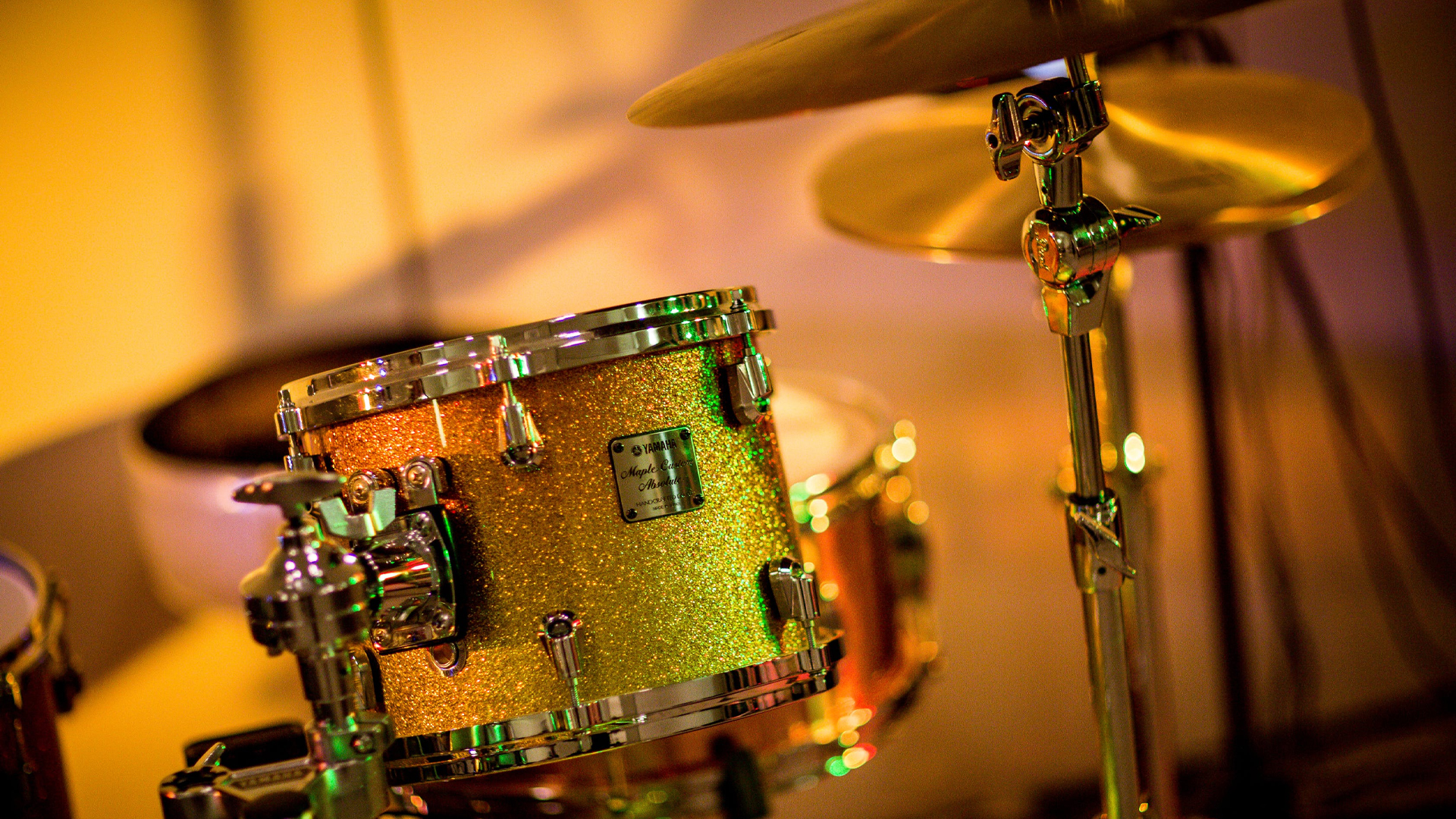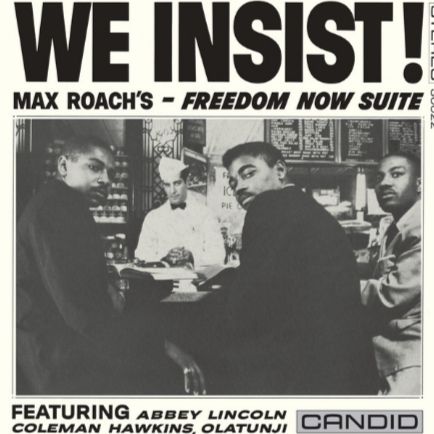Max Roach, la batterie comme voix du monde
Percussionniste, batteur et compositeur d’exception, Maxwell Lemuel Roach demeure l’une des figures les plus marquantes de l’histoire du jazz. Né à Newland, en Caroline du Nord, il a redéfini le rôle de la batterie, la faisant passer du simple accompagnement rythmique à une véritable voix musicale à part entière. Pionnier du bebop aux côtés de Charlie Parker et Dizzy Gillespie, Max Roach a su faire de son instrument un outil d’expression harmonique, mélodique et politique.
À seulement seize ans, il remplace Sonny Greer lors d’un concert de l’orchestre de Duke Ellington, puis récidive peu après dans celui de Count Basie – une prouesse rare pour un adolescent. En 1942, alors que la 52e rue new-yorkaise vibre au son du bebop naissant, Max Roach fréquente assidûment les clubs avec son ami Bud Powell. Ensemble, ils absorbent l’énergie d’une génération en quête de renouveau musical.
Repéré par Charlie Parker, il participe aux légendaires jam sessions du Minton’s Playhouse et du Monroe’s Uptown House, véritables laboratoires du jazz moderne. En 1945, Coleman Hawkins lui offre sa première séance d’enregistrement, avant qu’il n’intègre, la même année, le quintette historique de Parker et Gillespie, enregistrant Billie’s Bounce et Now’s the Time au club Three Deuces.
Après une tournée triomphale en Californie, Max Roach s’installe à New York et collabore avec Jay Jay Johnson, Dexter Gordon et bien d’autres. En 1949, il accompagne Parker au premier Festival de Jazz de Paris, puis participe au concert légendaire du Massey Hall à Toronto en 1953, moment d’anthologie du bebop. L’année suivante, il fonde avec Clifford Brown un quintette qui deviendra une référence absolue du hard bop. Leur alliance, entre lyrisme et rigueur rythmique, redéfinit la grammaire du jazz moderne. Après la mort tragique de Brown en 1956, Max Roach poursuit l’aventure avec Kenny Dorham, continuant à explorer la structure rythmique avec une précision mathématique et une liberté poétique.
Mais Max Roach n’était pas seulement un innovateur musical: il fut aussi un artiste engagé. Conscient de la portée politique de la musique, il participe activement au mouvement pour les droits civiques. En 1960, il organise un festival alternatif à celui de Newport pour protester contre la ségrégation raciale et enregistre l’album We Insist! Freedom Now Suite, manifeste musical contre l’injustice. Son engagement se poursuit dans les décennies suivantes et en 1985 il participe au concert international pour la libération de Nelson Mandela.
Max Roach, la batería como voz del mundo
Percusionista, baterista y compositor excepcional, Maxwell Lemuel Roach sigue siendo una de las figuras más influyentes en la historia del jazz. Nacido en Newland, Carolina del Norte, redefinió el papel de la batería, transformándola de un mero acompañamiento rítmico en una auténtica voz musical por derecho propio. Pionero del bebop junto a Charlie Parker y Dizzy Gillespie, Max Roach convirtió su instrumento en un medio de expresión armónica, melódica y política.
Con apenas dieciséis años, sustituyó a Sonny Greer en un concierto de la orquesta de Duke Ellington, y poco después hizo lo mismo en la de Count Basie, una hazaña poco común para un adolescente. En 1942, mientras la calle 52 de Nueva York vibraba al ritmo del naciente bebop, Max Roach frecuentaba los clubes junto a su amigo Bud Powell. Juntos absorbían la energía de una generación decidida a renovar el lenguaje musical.
Descubierto por Charlie Parker, participó en las legendarias jam sessions del Minton’s Playhouse y del Monroe’s Uptown House, auténticos laboratorios del jazz moderno. En 1945, Coleman Hawkins le ofreció su primera sesión de grabación, antes de que se uniera ese mismo año al histórico quinteto de Parker y Gillespie, registrando Billie’s Bounce y Now’s the Time en el club Three Deuces.
Tras una gira triunfal por California, Max Roach se instaló en Nueva York y colaboró con Jay Jay Johnson, Dexter Gordon y muchos otros. En 1949 acompañó a Parker al primer Festival de Jazz de París y en 1953 participó en el legendario concierto del Massey Hall de Toronto, un momento emblemático del bebop. Al año siguiente fundó con Clifford Brown un quinteto que se convertiría en una referencia absoluta del hard bop. Su alianza, entre lirismo y rigor rítmico, redefinió la gramática del jazz moderno. Tras la trágica muerte de Brown en 1956, Max Roach continuó la aventura junto a Kenny Dorham, explorando la estructura rítmica con precisión matemática y libertad poética.
Pero Max Roach no fue solo un innovador musical: también fue un artista comprometido. Consciente del poder político de la música, participó activamente en el movimiento por los derechos civiles. En 1960 organizó un festival alternativo al de Newport para protestar contra la segregación racial y grabó el álbum We Insist! Freedom Now Suite, un manifiesto musical contra la injusticia. Su compromiso continuó durante las décadas siguientes, y en 1985 participó en el concierto internacional por la liberación de Nelson Mandela.
Max Roach, la batteria come voce del mondo
Percussionista, batterista e compositore d’eccezione, Maxwell Lemuel Roach rimane una delle figure più significative della storia del jazz. Nato a Newland, Carolina del Nord, ha ridefinito il ruolo della batteria, trasformandola da semplice accompagnamento ritmico in una vera e propria voce musicale autonoma. Pioniere del bebop insieme a Charlie Parker e Dizzy Gillespie, Max Roach ha saputo fare del suo strumento un mezzo di espressione armonica, melodica e politica.
A soli sedici anni sostituì Sonny Greer in un concerto dell’orchestra di Duke Ellington, per poi ripetere l’impresa con quella di Count Basie – un traguardo raro per un adolescente. Nel 1942, mentre la 52ª strada di New York vibrava al suono del nascente bebop, Max Roach frequentava assiduamente i club con l’amico Bud Powell. Insieme assorbivano l’energia di una generazione alla ricerca di un nuovo linguaggio musicale.
Notato da Charlie Parker, partecipò alle leggendarie jam session del Minton’s Playhouse e del Monroe’s Uptown House, veri laboratori del jazz moderno. Nel 1945 Coleman Hawkins gli offrì la prima sessione di registrazione, prima che entrasse, nello stesso anno, nel celebre quintetto di Parker e Gillespie, incidendo Billie’s Bounce e Now’s the Time al club Three Deuces.
Dopo una tournée trionfale in California, Max Roach si stabilì a New York e collaborò con Jay Jay Johnson, Dexter Gordon e molti altri. Nel 1949 accompagnò Parker al primo Festival di Jazz di Parigi e nel 1953 partecipò al leggendario concerto del Massey Hall di Toronto, momento emblematico del bebop. L’anno successivo fondò con Clifford Brown un quintetto destinato a diventare un punto di riferimento assoluto del hard bop. La loro unione, tra lirismo e rigore ritmico, ridefinì la grammatica del jazz moderno. Dopo la tragica morte di Brown nel 1956, Max Roach proseguì il percorso con Kenny Dorham, continuando a esplorare la struttura ritmica con precisione matematica e libertà poetica.
Ma Max Roach non fu soltanto un innovatore musicale: fu anche un artista impegnato. Consapevole della portata politica della musica, partecipò attivamente al movimento per i diritti civili. Nel 1960 organizzò un festival alternativo a quello di Newport per protestare contro la segregazione razziale e incise l’album We Insist! Freedom Now Suite, un manifesto musicale contro l’ingiustizia. Il suo impegno proseguì nei decenni successivi e nel 1985 partecipò al concerto internazionale per la liberazione di Nelson Mandela.
Max Roach, the drums as the voice of the world
Percussionist, drummer, and exceptional composer, Maxwell Lemuel Roach remains one of the most influential figures in the history of jazz. Born in Newland, North Carolina, he redefined the role of the drums, elevating them from mere rhythmic accompaniment to a genuine musical voice in their own right. A pioneer of bebop alongside Charlie Parker and Dizzy Gillespie, Max Roach turned his instrument into a vehicle for harmonic, melodic, and political expression.
At only sixteen, he replaced Sonny Greer during a concert with Duke Ellington’s orchestra, and soon after did the same with Count Basie’s band—a rare feat for a teenager. In 1942, as New York’s 52nd Street pulsed with the sound of emerging bebop, Max Roach was a regular in the clubs with his friend Bud Powell. Together, they absorbed the energy of a generation seeking a new musical direction.
Discovered by Charlie Parker, he took part in the legendary jam sessions at Minton’s Playhouse and Monroe’s Uptown House, true laboratories of modern jazz. In 1945, Coleman Hawkins gave him his first recording session before he joined, later that same year, Parker and Gillespie’s historic quintet, recording Billie’s Bounce and Now’s the Time at the Three Deuces club.
After a triumphant tour in California, Max Roach settled in New York and collaborated with Jay Jay Johnson, Dexter Gordon, and many others. In 1949, he accompanied Parker to the first Paris Jazz Festival and, in 1953, took part in the legendary Massey Hall concert in Toronto, a defining moment in bebop history. The following year, he co-founded a quintet with Clifford Brown that became an absolute benchmark of hard bop. Their partnership, blending lyricism and rhythmic rigor, redefined the grammar of modern jazz. After Brown’s tragic death in 1956, Max Roach continued the journey with Kenny Dorham, delving further into rhythmic structure with mathematical precision and poetic freedom.
But Max Roach was more than a musical innovator—he was also a committed activist. Deeply aware of music’s political power, he took an active role in the civil rights movement. In 1960, he organized an alternative festival to Newport as a protest against racial segregation and recorded the album We Insist! Freedom Now Suite, a musical manifesto against injustice. His activism continued in the following decades, and in 1985 he took part in the international concert for the liberation of Nelson Mandela.

Autres articles – Otros artículos – Altri articoli
Count BASIE (21.08.1904–26.04.1984)
Clifford BROWN (30.10.1930–26.06.1956)
Kenny DORHAM (30.08.1924–05.12.1972)
Duke ELLINGTON (29.04.1899–24.05.1974)
Dizzy GILLESPIE (21.10.1917–06.01.1993)
Dexter GORDON (27.02.1923–25.04.1990)
Coleman HAWKINS (21.11.1904–19.05.1969)
Jay Jay JOHNSON (22.01.1924–04.02.2001)
Styles de jazz – Estilos de jazz – Stili di jazz – Jazz Styles
Yesterdays–16.02.1944–Coleman HAWKINS
A Night In Tunisia–22.06.1945–Charlie PARKER & Dizzy GILLESPIE
How Deep Is The Ocean?–17.12.1947–Charlie PARKER
Cherokee–23.02.1949–Bud POWELL
A Night In Tunisia–01.05.1951–Bud POWELL
The Blues Walk–24.02.1955–Clifford BROWN & Max ROACH

